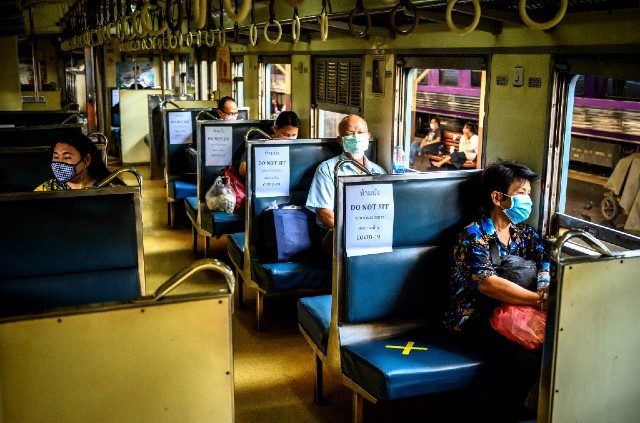SUMMARY
This is AI generated summarization, which may have errors. For context, always refer to the full article.

MANILA, Philippines – Early “strong social distancing” is key to controlling the spread of the novel coronavirus, but a one-off implementation might not be the viable solution in the absence of a cure, a recent study from Harvard University found.
Using a mathematical model, professors from the Harvard T.H. Chan School of Public Health suggested in a study released in March 2020 that “intermittent social distancing” – or leaving a period in between the implementation of measures against the virus – is a good option for now.
This may be practised all the way to 2022, it added.
Distancing, according to the World Health Organization, refers to maintaining a one-meter distance between two people. WHO now refers to it as “physical distancing,” and includes measures such as canceling sporting events, concerts, and other large gatherings.
An intermittent implementation of distancing will “maintain critical care demand within threshold,” as compared to one-off implementation which may lead to an increase in the number of cases by September 2020, “potentially exacerbating the load on critical care resources.”
The research study, conducted by Yonatan Grad, Stephen Kissler, Christine Tedijanto, and Marc Lipsitch, analyzed data reflecting the situation in the United States, which saw at least 122,653 people infected and 2,112 deaths as of March 30.
Hospitals and other health facilities are burdened by the rising number of cases, straining their limited resources for those who need critical care.
“A single period of social distancing will not be sufficient to prevent critical care capacities from being overwhelmed by the COVID-19 epidemic, because under any scenario considered it leaves enough of the population susceptible that a rebound in transmission after the end of the period will lead to an epidemic that exceeds this capacity,” the study stated.
An effective intermittent social distancing strategy will, however, require widespread surveillance “to monitor when the prevalence thresholds that trigger the beginning or end of distancing have been crossed.”
“Without such surveillance, critical care bed availability might be used as a proxy for prevalence, but this metric is far from optimal since the lag between distancing and peak critical care demand could lead to frequent overrunning of critical care resources,” it said.
Until when is this recommended? The intensity and need for distancing, while important to counter the spread of the virus for now, will only decrease if treatments or vaccines are developed and released, the study noted.
“Treatments could reduce the proportion of infections that require critical care and could reduce the duration of infectiousness, which would both directly and indirectly reduce the demand for critical care resources,” it said.
“A vaccine would accelerate the accumulation of immunity in the population, reducing the overall length of the epidemic and averting infections that might have resulted in a need for critical care,” the study added.
But in the absence of new developments and other preventative measures, intermittent distancing may be the only way to avoid exceeding critical health care capacity while building population immunity.
“The development and widespread adoption of pharmaceutical interventions will take months at best, so a period of sustained or intermittent social distancing will almost certainly be necessary,” the study said, adding that distancing measures, without any other developments, may be implemented all the way up to 2022.
The Philippine situation
As of Monday, March 30, the Philippines has recorded 1,546 confirmed cases, with 42 recoveries and 78 deaths.
Former health secretary Manuel Dayrit, who as DOH chief led the response against the SARS outbreak from 2002 to 2003, said that the current figures do not include those that are left undetected and reflect “the picture 7 to 10 day ago,” because that is the average period before test results come out. (READ: Ex-DOH chief: Actual number of virus cases could reach 75,000 in 2 weeks)
To contain the spread of the virus, President Rodrigo Duterte placed the country under a state of public health emergency and a state of calamity. He also placed Metro Manila and Luzon under “enhanced community quarantine” or lockdown until April 14 and April 12 respectively.
Government officials are still deliberating whether to extend the ECQ.
Congress, meanwhile, granted Duterte special powers to respond to the outbreak through Republic Act No. 11469 or the Bayanihan to Heal As One Act. – Rappler.com
Add a comment
How does this make you feel?
There are no comments yet. Add your comment to start the conversation.